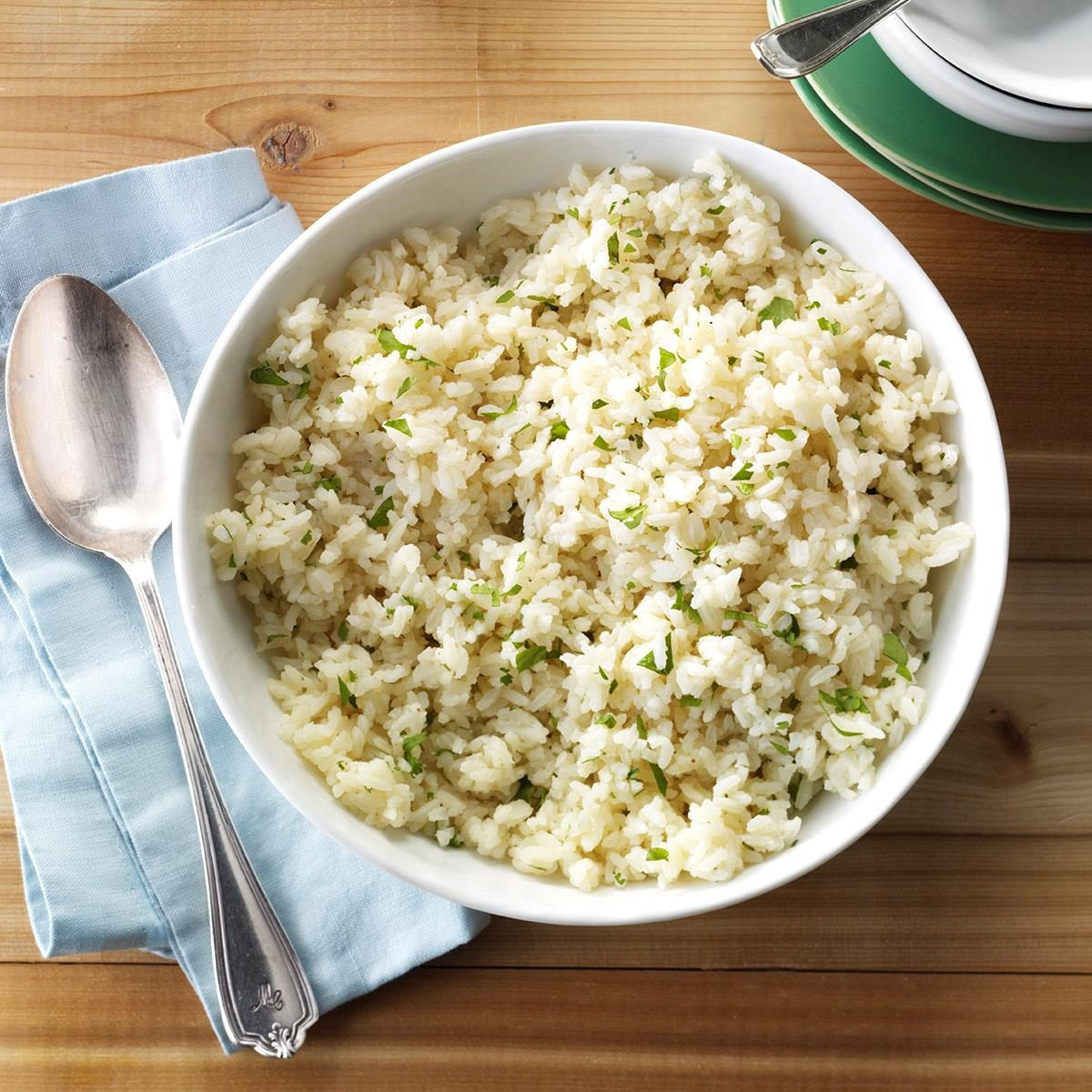Mexican cuisine is celebrated globally for its vibrant flavors and diverse dishes. Often what comes to mind are tacos and burritos, but Traditional Mexican Food is a rich tapestry woven from centuries of history and regional influences. Understanding what truly makes up a typical Mexican meal reveals a fascinating culinary world far beyond Tex-Mex adaptations.
 Close-up of vibrant Cilantro Lime Rice, a staple in traditional Mexican cuisine and a popular side dish, showcasing fluffy white rice with fresh cilantro and lime zest.
Close-up of vibrant Cilantro Lime Rice, a staple in traditional Mexican cuisine and a popular side dish, showcasing fluffy white rice with fresh cilantro and lime zest.
At the heart of traditional Mexican food are three essential ingredients: corn, meat, and chiles. Corn, in its myriad forms, is a staple – from tortillas and tamales to the base of hearty soups. Meat, whether it’s pork, beef, or chicken, is prepared in countless ways, each region boasting its own specialties. And chiles, far from being just about heat, provide layers of flavor, aroma, and color that define Mexican cooking. A typical dinner might feature flavorful taco recipes filled with slow-cooked meats, rich enchiladas smothered in savory sauces, or a comforting meaty soup like chorizo chili, showcasing these core ingredients in delicious combinations. To complement these dishes, refreshing drinks like agua fresca are common, while special occasions might call for tequila or mezcal, adding to the authentic Mexican food experience.
The diversity of traditional Mexican food is also deeply regional. Dishes vary dramatically from the north to the south. For instance, cochinita pibil, a slow-roasted pork dish, hails from the Yucatán peninsula and is a testament to the region’s unique flavors. In Oaxaca, tlayudas, large crispy tortillas topped with refried beans, cheese, and lettuce, reign supreme, featuring the famous quesillo, a uniquely stringy Oaxacan cheese. Exploring these regional specialties is key to truly understanding the breadth of traditional Mexican food. Beyond these, dishes like chiles rellenos, barbacoa, and carnitas (especially Michoacan style) are also highly regarded and represent different facets of authentic Mexican cuisine.
When seeking out authentic traditional Mexican food, it’s important to move beyond common misconceptions. One frequent deviation in Americanized Mexican food is the excessive use of cheese. While cheese is used, it’s not as ubiquitous as often portrayed. Similarly, the perception of chiles as solely spicy overlooks the vast range of chiles that offer nuanced flavors rather than just heat. Even the approach to meat differs; in Mexico, ordering tacos often involves specifying the cut of meat, such as “surtido” or “suadero,” emphasizing the variety and quality of meat preparations in traditional Mexican food, contrasting with the reliance on ground beef in some adaptations.
In conclusion, traditional Mexican food is a vibrant and diverse cuisine that goes far beyond typical Tex-Mex fare. It’s rooted in core ingredients like corn, meat, and chiles, and is expressed through a rich tapestry of regional dishes and cooking techniques. Exploring the authenticity and variety of traditional Mexican food offers a truly rewarding culinary journey.
